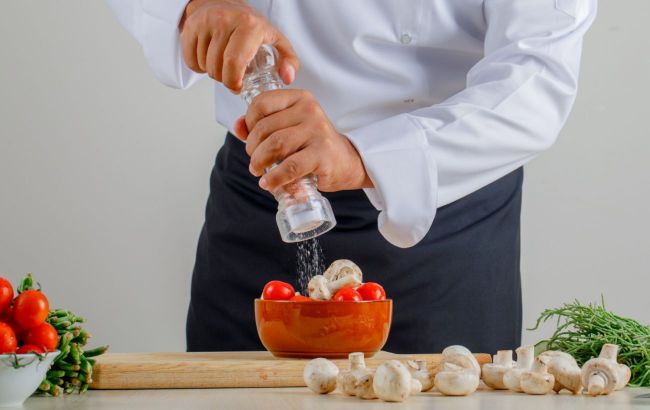Health impact of salt levels: Nutritionist's insight
 Illustrative photo (Photo: Freepik)
Illustrative photo (Photo: Freepik)
For years, dietetic dogmas have emphasized the importance of avoiding salt and limiting its daily intake. However, recent research in the last few years shows that it's not that simple, according to a post by nutritionist Anastasiia Holoborodko on Telegram.
The dangers of consuming salt
"You can't abuse salt. A person predisposed to hypertension can refrain from salt and effectively save their life. In treating high blood pressure, there's a stage - reducing salt intake and only then resorting to medication," explains the expert.
According to her, salt ages the cardiovascular system. Furthermore, it increases the osmotic pressure of blood plasma, leading to overeating. It's also proven to induce changes in mucous membranes and stomach oncology.
She adds that for those with ulcers or gastritis, excessive salt consumption creates an environment for Helicobacter pylori to thrive. Additionally, in cases of hormonal pathologies, salt stimulates swelling.
The advantages of consuming salt
"On the other hand, completely unsalted food means a decrease in an adequate level of stomach acidity, hypoacidity, and inadequate, often leading to pathogenic putrefactive processes, protein digestion (meat, fish, eggs), and poor fat absorption," explains the nutritionist.
She names five pathologies resulting from a salt-free diet: hypoacidity, increased triglycerides, insulin resistance, and electrolyte imbalances.
However, Holoborodko adds that we consume 80% of salt from products without even noticing.
"A good strategy - if you've already salted a dish, don't add more. There's a norm - 2.3 grams per day for healthy individuals, and 1 gram for those predisposed to high blood pressure. Simply eat less bread and avoid sausages and packaged food. Salty snacks and nibbles do not equate to proper meals," says Holoborodko.
Which salt is best to include in the diet
The nutritionist advises reconsidering the quality of salt. Ordinary kitchen salt creates an imbalance of sodium and potassium in the diet.
"Replace industrial salt with more natural types, which we'll discuss today," suggests the expert.
She emphasizes that the less processed the salt, the better. According to her, kitchen salt has a poor mineral composition, so she doesn't recommend it. Sea salt has a varied chemical profile depending on the sea, enriching the flavor with minerals. Additionally, there's salt with additives - iodized, for instance, as well as pink and black salt.
"Maldon - flake salt. It has been produced in Essex county in southeastern England since the late 19th century. I adore this salt," says Holoborodko.
Black Himalayan salt contains iron sulfite, giving the salt crystals a dark brown-purple color, and sulfur compounds provide a hydrogen sulfide smell.
Pink salt - among the world's top 3 locations for extraction: in the Himalayas, Pakistan, and India. It's often large-grained and contains up to 5% impurities.
There are also flavored varieties. The nutritionist recommends choosing Nomu salt, with dry rosemary for summer and white mushrooms for winter.
Salt with charcoal. This is extracted in Spain and Portugal, Japan, and Korea.
Just sea salt. There's mineral salt of large grain, sedimentary, salt from the depths of the oceans.
"So, remove sausages from your diet and add a bit of quality salt for dish finishing," advises Holoborodko.
Also, read about the tea that can reduce the risk of developing cancer.
Earlier, we wrote about the six nuts that are highly beneficial for heart and vascular health.
This material is for informational purposes only and should not be used for medical diagnosis or self-treatment. Our goal is to provide readers with accurate information about symptoms, causes, and methods of detecting diseases. RBС-Ukraine is not responsible for any diagnoses that readers may make based on materials from the resource. We do not recommend self-treatment and advise consulting a doctor in case of any health concerns.

